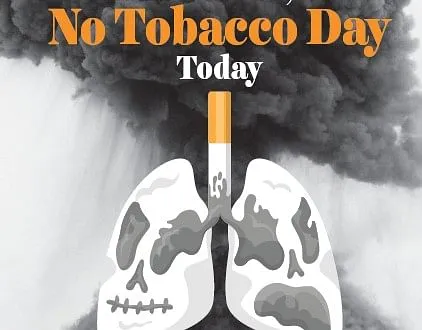Before we go any further, just outside the gates of hospitals where hundreds of patients are told they have very little time to live due to the cancer that has devastated their bodies, little vendors freely sell cigarettes.
Little because many of them are underage, have little kiosks and are open to opening the packets and selling loose cigarettes. Many of these kids invite their customers with a lit cigarette in their mouths. Smoking is a proven and a major cause of cancer.
Jammu and Kashmir has earned the distinction of being the smoking capital of India. In terms of population and the percentage of people who smoke, the UT has the highest number of people who consume tobacco by smoking.
The number of people consuming smokeless tobacco is vey less though. As per the last National Family Health Survey (NFHS-5), one third of men in Jammu and Kashmir consume tobacco. And cigarettes are the most common form of tobacco consumption.
“Nearly one-third (32%) of men, but only 1 percent of women, age 15-49 use some form of tobacco. Tobacco products mostly used by men are cigarettes (27%), bidis (4%), hookah and cigars or pipe (2% each). Among women and men, the use of any form of tobacco is slightly higher in rural areas (1.4% for women and 35% for men) than in urban areas (0.7% for women and 24% for men). Over one-third (35%) of men who smoke cigarettes smoked 5 to 9 cigarettes in the past 24 hours” reads the survey. Many Global Adult Tobacco Survey (GATS) have revealed how deeply the tobacco consumption is ingrained in the population.
What is more worrying is that the youngsters are also falling prey to tobacco. The schools and colleges are surrounded by shops and vendor who have no qualms about selling cigarettes to the underage.
Over the past century, the economics of tobacco has continuously overpowered the healthcare system.
And it continues to be the case. The Global Survey 2017-18 showed that J&K had consumed tobacco products worth Rs 5530 crores over the preceding seven years and has fetched its sales tax department its highest revenue.
It would not be in the interest of pockets of the businesses to take measures for reduction in the use and sale of tobacco products. Thus, a blind eye is being turned towards the open invitations to the young generation, to join the bandwagon of smokers.
The agencies and bodies responsible for the implementation of The Cigarettes and Other Tobacco Products Act 2003 (COTPA 2003) have been ineffective in controlling the sale outside schools, sale to underage people and sale outside the healthcare institutions and other prohibited places.
It has also failed to ensure that no loose cigarettes are sold and the bold message on the packs of the cigarettes goes with one who buys the product. Perhaps the lackadaisical approach is a deliberate one, rather than incidental due to the lack of staff.
The fact that smoking is the first step for many who fall into the trap of substance abuse must have shaken us out of our slumbers. Kashmir has become a place that reeks of contraband substances, where the young generation has been trapped by dangerous drugs like heroin.
Many psychiatrists would give detailed account of how one cigarette puts these youth onto the path of self destruction. In adults, the burden of Chronic Obstructive Pulmonary Disease (COPD) is so high in Kashmir, and that it is linked to smoking has pushed our doctors to warn their patients of the painful end that they could face in case they do not stop smoking. Jammu and Kashmir has the highest burden of COPD in India.
Tobacco is highly addictive. People who smoke are addicted to nicotine and their bodies crave for nicotine if they do not smoke. Now, there are treatments for nicotine addiction, available in market as nicotine replacement therapy and also available in the various centers that treat addiction in Kashmir.
It is important to treat tobacco addiction and equally important to prevent the young generation from falling into this addiction. For this, the demand and supply both need to be addressed. It is a collective responsibility of our society and its various constituents.
DISCLAIMER: The views and opinions expressed in this article are the personal opinions of the author.
The facts, analysis, assumptions and perspective appearing in the article do not reflect the views of GK.






